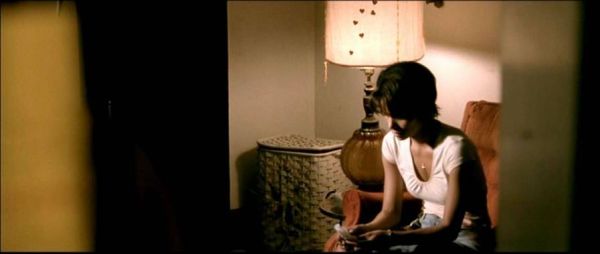Difference between revisions of "JCM312/Cinematography"
From Screenpedia
Jump to navigationJump to search (created page with text from FILM ART) |
(Incorporated TVCMA questions) |
||
| Line 1: | Line 1: | ||
| − | + | *Explain what <strong>focal length</strong> is -- using the textbook illustrations. | |
| − | + | **How does a zoom in/out look different from a track in/out?</LI> | |
| − | + | *Explain what <strong>depth of field</strong> is -- using the textbook illustrations. | |
| − | + | **What is the difference between deep focus and deep space (as in mise-en-scene)? | |
| − | + | *Explain what <strong>aspect ratio</strong> is -- using the textbook illustrations. | |
| − | + | **Also explain letterbox and pan-and-scan. | |
| − | + | **What are the aspect ratios of ''Day for Night'', ''Shakespeare in Love'' and ''Monster's Ball''? | |
| − | + | *Explain the significance of camera <strong>framing, height, and movement</strong> -- using the textbook illustrations. | |
| − | + | **When might movement be used that does <I>not</I> follow a character? How is a Steadicam shot different from a handheld shot? | |
| − | |||
| − | |||
| − | |||
| − | |||
| − | |||
| − | |||
| − | |||
| − | |||
| − | |||
| − | |||
| − | |||
| − | |||
==Cinematography and narrative== | ==Cinematography and narrative== | ||
| Line 28: | Line 16: | ||
[[Image:MonstersBall02.jpg|thumb|left|600px|Shot three from the ''Monster's Ball'' scene continues.]] | [[Image:MonstersBall02.jpg|thumb|left|600px|Shot three from the ''Monster's Ball'' scene continues.]] | ||
<br clear="all"> | <br clear="all"> | ||
| + | ==External links== | ||
| + | #[http://www.routledge.com/cw/butler-9780415883283/s1/gallery-08/ ''Television'' illustrations, Chapter 8.] | ||
| + | #[http://www.tcf.ua.edu/Classes/Jbutler/T440/VisualStyleIllustrations02.htm Cinematography illustrations] | ||
| + | #[http://www.tcf.ua.edu/Classes/Jbutler/T440/MonstersBall/index.htm ''Monster's Ball'' frame grabs] | ||
== Bibliography == | == Bibliography == | ||
| − | #Jeremy G. Butler, ''Television: Critical Methods and Applications'' (New York: Routledge, | + | #Jeremy G. Butler, ''Television: Critical Methods and Applications'', 4th Edition (New York: Routledge, 2012). |
#David Bordwell and Kristin Thompson, ''Film Art: An Introduction'' (New York: McGraw-Hill). | #David Bordwell and Kristin Thompson, ''Film Art: An Introduction'' (New York: McGraw-Hill). | ||
| − | |||
| − | |||
| − | |||
| − | |||
[[Category:TCF340 Discussion]] | [[Category:TCF340 Discussion]] | ||
Revision as of 00:56, 4 September 2012
- Explain what focal length is -- using the textbook illustrations.
- How does a zoom in/out look different from a track in/out?
- Explain what depth of field is -- using the textbook illustrations.
- What is the difference between deep focus and deep space (as in mise-en-scene)?
- Explain what aspect ratio is -- using the textbook illustrations.
- Also explain letterbox and pan-and-scan.
- What are the aspect ratios of Day for Night, Shakespeare in Love and Monster's Ball?
- Explain the significance of camera framing, height, and movement -- using the textbook illustrations.
- When might movement be used that does not follow a character? How is a Steadicam shot different from a handheld shot?
Cinematography and narrative
In the Monster's Ball scene we viewed, what narrative functions does the cinematography serve? Be sure to consider deep/shallow focus, focus shifts and framing in the third shot.
External links
Bibliography
- Jeremy G. Butler, Television: Critical Methods and Applications, 4th Edition (New York: Routledge, 2012).
- David Bordwell and Kristin Thompson, Film Art: An Introduction (New York: McGraw-Hill).

